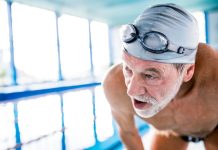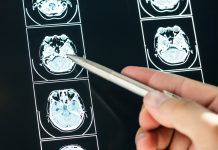
This month marks a significant milestone for stroke survivors in British Columbia as they begin testing a groundbreaking new technology aimed at enhancing their recovery process.
This innovation, a “smart glove,” is set to transform the way rehabilitation exercises are conducted and monitored.
Developed for a stroke therapy study, this smart glove is the brainchild of Dr. Peyman Servati, a professor of electrical and computer engineering at UBC, and his Ph.D. student Arvin Tashakori, along with their team at the startup Texavie.
The participants in this trial, supervised by Dr. Janice Eng, a prominent stroke rehabilitation specialist and professor at UBC, will be the first to experience the benefits of this advanced technology.
The glove is a marvel of modern engineering, integrating a network of highly sensitive sensor yarns and pressure sensors into a stretchy, comfortable fabric.
This design allows it to accurately track and wirelessly transmit the minutest movements of the hand and fingers during rehabilitation exercises.
Unlike traditional methods that rely on cameras for monitoring, this glove offers a more convenient and precise alternative.
Dr. Eng emphasizes the glove’s capability to monitor hand and finger movements sans cameras, which enables the analysis and fine-tuning of exercise programs for optimal results, even remotely.
This feature is particularly significant for stroke survivors, as it allows for personalized rehabilitation routines tailored to their specific needs.
The smart glove’s precision and functionality are highlighted in a recent paper published in Nature Machine Intelligence.
The technology is described as the most accurate of its kind, capable of tracking hand and finger movements and grasping force without the need for external motion-capture cameras.
It utilizes machine learning models to determine the angles of all finger joints and the wrist, predicting movements with at least 99-percent accuracy.
What sets this glove apart from other products on the market is its wireless design, comfort, and ease of maintenance. It can be easily washed after removing the battery, making it a practical solution for daily use.
The manufacturing methods developed by Dr. Servati and his team also ensure that these smart gloves and related apparel can be produced at a relatively low cost.
The potential applications of this smart glove extend beyond stroke rehabilitation. Dr. Servati envisions its integration into virtual reality, augmented reality, animation, and robotics.
The glove’s ability to accurately capture hand movements and interactions with objects opens up a world of possibilities, from typing text without a physical keyboard to controlling robots or translating American Sign Language into written speech in real time.
This could significantly improve communication for individuals who are deaf or hard of hearing.
In summary, the smart glove represents a significant advancement in rehabilitation technology, offering stroke survivors a highly effective tool for recovery.
Its precision, ease of use, and potential for diverse applications herald a new era in medical technology, with promising implications for various fields beyond healthcare.
If you care about health, please read studies that plant-based diets can harm your bone health without these nutrients, and this bone problem may strongly increase COVID-19 death risk.
For more information about wellness, please see recent studies that too much of this vitamin may increase your risk of bone fractures, and results showing this type of exercise may protect your bone health, slow down bone aging.
The research findings can be found in Nature Machine Intelligence.
Copyright © 2024 Knowridge Science Report. All rights reserved.



